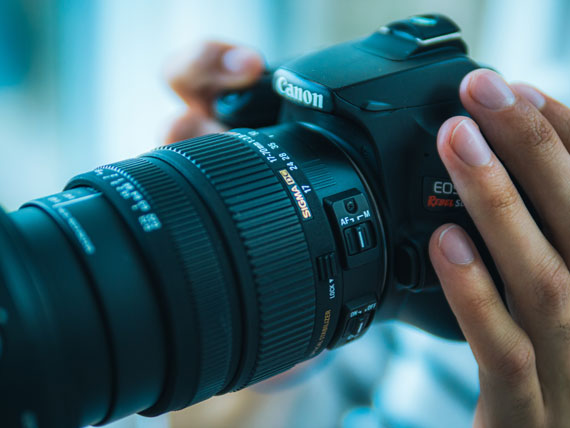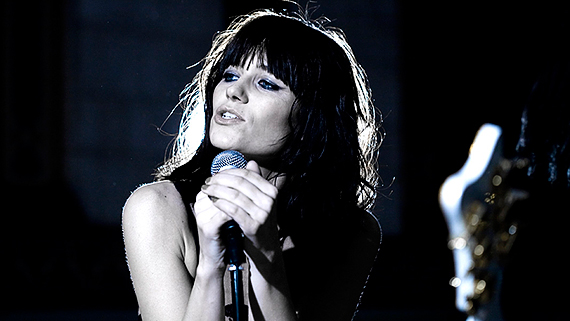Automatic focus (AF) has come a long way in modern cameras. Leica came out with some of the first patents for AF back in the mid-1970s and some of the early attempts to implement the feature on a wide basis were less than stellar. Most used either infrared light or sound to measure the distance to the subject and were easily confused by glass, rain and other obstructions. You could actually hear the motors whirring as a set of gears in the camera manually turned the lens focus and the old cameras had a tendency to hunt around for focus, a process that could take quite a long time.

Photo captured by Maxime Dore
Today AF systems are a modern marvel of speed and engineering excellence. Most of the focusing motors in high end cameras have moved from the camera body to the lens and they are virtually silent. Modern DSLRs don’t have a single point of focus, in some cases they have dozens and a mechanism for the photographer to cycle through or otherwise adjust the point of focus. The new AF systems are now lightning fast and are able to adjust faster than your eye can see the change.
For all of the marvel and improvement technology has brought to AF systems, there are still going to be times when you need to turn the AF switch to off and focus manually.
The most common times when AF has trouble is in low light situations. Some cameras have infrared lights (IR) that help the camera focus, others use a quick pre-flash from the on-camera flash to let the AF see the subject clearly. Sometimes the IR will do the job, but not always. Phase and contrast detect AF systems are still vulnerable to confusion in mixed light situations, like a stage where the performer may be lighted better than the people in the audience.
Another situation that can confuse AF are shots with a lot of sky in them. Sometimes, when there is no subject or it’s difficult to detect, the AF system will simply start hunting around. On some cameras, if the AF isn’t locked when you push the shutter button nothing happens! There’s nothing quite like the visceral feeling of watching a fleeting shot disappear while you’re hammering on the shutter button like a mad person and the camera insists on waiting for the AF first.
That’s why, even today, it’s a good idea to practice focusing with the AF turned off. One of the best places to do that is a dog park. Dogs don’t get self-conscious when having their picture taken and are usually running around and just having a blast. You will learn to focus extremely fast by hand and, given that you’ll be working in daylight, you’ll be using an f-stop that will give you some latitude on the focus point.

“The Concert” captured by PictureSocial member Per Janus
It’s good to practice focus in a situation where it’s not important before you get hired to shoot a concert or musical event, one of those situations where you might want to take over from the AF system. AF is a wonderful tool, but do be aware of the limitations.
About the Author:
Peter Timko writes for Proud Photography, an online photography school.
Like This Article?
Don't Miss The Next One!
Join over 100,000 photographers of all experience levels who receive our free photography tips and articles to stay current:





Nice article. One thing to note about cameras not firing until focus is achieved is that most AF SLR cameras allow you to switch to release priority. While the default AF priority will not fire without seeing something in focus, release priorty will snap whenever the shutter release is fully depressed.
@Tiberman – I use the AF-ON button alot but I also use AF alot – but on my Nikon, I found out recently that VR is only activated when using the shutter release – so I’m trying to stop using it when I’m using a VR lens.
Also, when I use a remote trigger, if I have AF-ON only, the camera doesn’t refocus when I use the trigger – which can be good or bad, it depends on what I want to do at the time. If I’m doing separate frames of the same shot, then I probably don’t want to refocus, so having AF-ON only is good, along with not having the camera depend on exact focus for shutter release. On the other hand, having the camera refocus for each shot can help with close up work, if used carefully (checking that it’s actually focussing on what you want it to!).
Peter – Thanks for the informative article. Are there any shortcomings with back-button foccusing (AF-ON), which I use mostly for quick shots, and portraits of my grandchildren.
I have been using my manual focus more and more because the AF is just a pain in the ass.
Great article – I’ll have to practice manual focus on the dogs!
One of the things I have yet to fathom is, when hyperfocal distance is so key to landscape photography, why there isn’t a function to automatically set the focus of DSLR lenses to the correct hyperfocal distance for the aperture. Any thoughts?